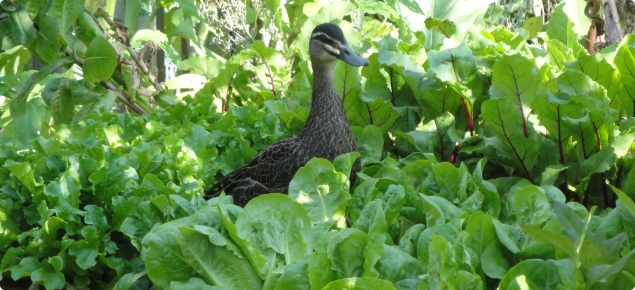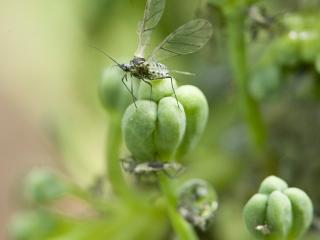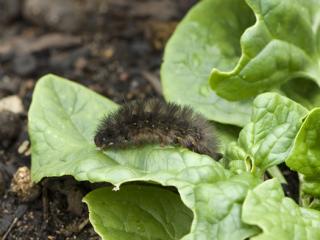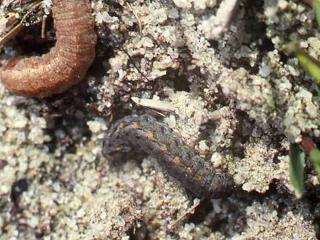Insects
Aphids
Aphids are 1–3mm, soft-bodied insects that can be green, grey, or black. Most commonly seen in spring and autumn, aphids can be winged or wingless and are usually slow-moving. Aphids cluster on the tips of the shoots, sucking the sap from the plant, which reduces plant vigour. Aphids can also spread viruses which can severely reduce yields and quality.
A number of natural enemies such as lacewings and ladybugs will give some biological control. If required, control with sprays such as garlic extract or horticultural oils and horticultural soaps. Sprays containing pyrethrum and piperonyl butoxide can also be used but crops can not be picked for one day after its use.
Caterpillars
Caterpillars are usually the larval stages of moths or butterflies. They are normally hairless, with a long cylindrical body from 10–50mm long and range in colour. Caterpillars may attack leaves, stems, flowers, fruits and roots.
Green caterpillars of the large cabbage white butterfly and the small diamond-back (cabbage) moth can severely damage the leaves of the Brassica family which includes broccoli, cabbage, kale and cauliflower.
Cluster caterpillars, woolly bear caterpillars and looper caterpillars will attack the leaves of most vegetables.
The eggfruit caterpillar bores into aubergine and the native budworm will bore into the fruit of many vegetables, especially, capsicums, tomatoes and sweet corn. These fruit pests are hard to kill and early spraying is required to kill the caterpillars before they enter the fruits.
Other caterpillars attack the roots and stems. Potato moth caterpillars will ‘mine’ potato leaves and bore into potato tubers.
Cutworms
Cutworms hide in the soil by day and attack plants at night. They damage the stem of young seedlings at the base, causing the plant to collapse.
Control with Bacillus thuringiensis, a biological insecticide which targets only caterpillars but needs to be sprayed every five days or after rain or overhead watering.
Spinosad is a chemical of low toxicity which has a translaminar movement, which means the chemical moves into the leaf, making the active ingredient resistant to rain and sunlight once the spray has dried. Sprays containing pyrethrum and piperonyl butoxide can also be used but crops can not be picked for one day after spraying.





